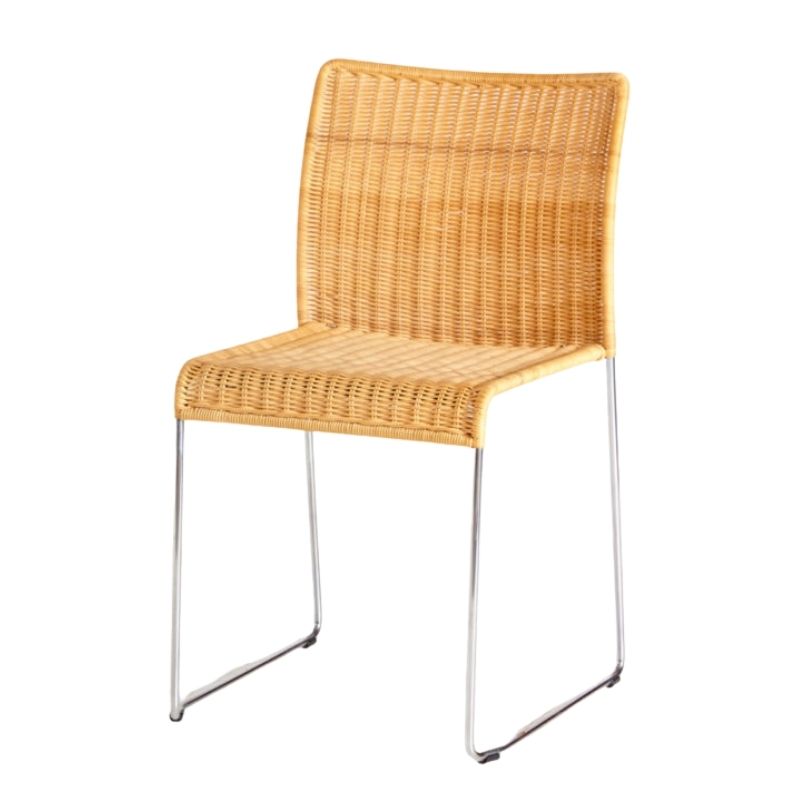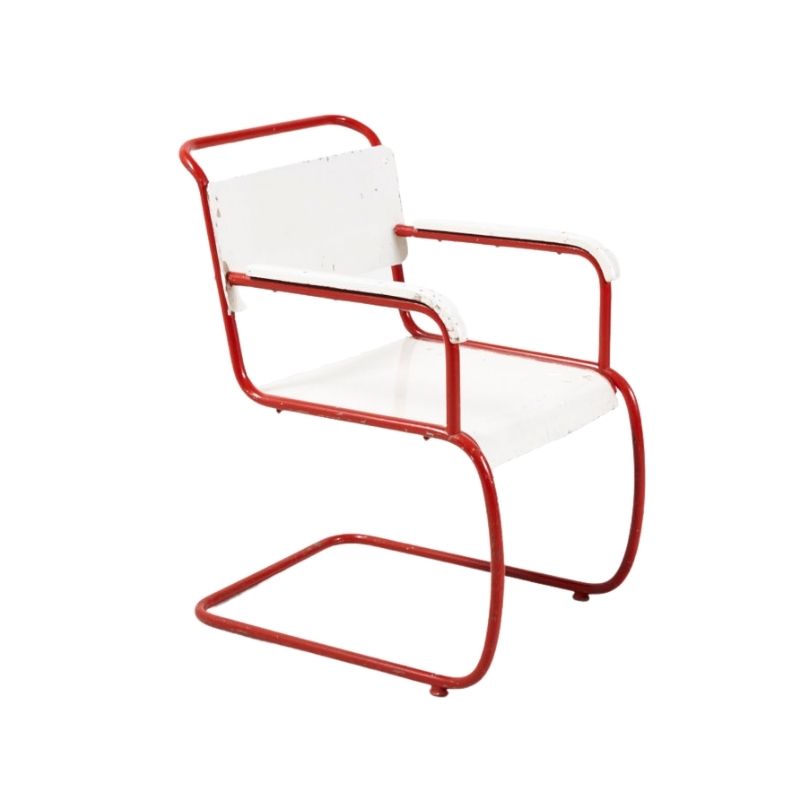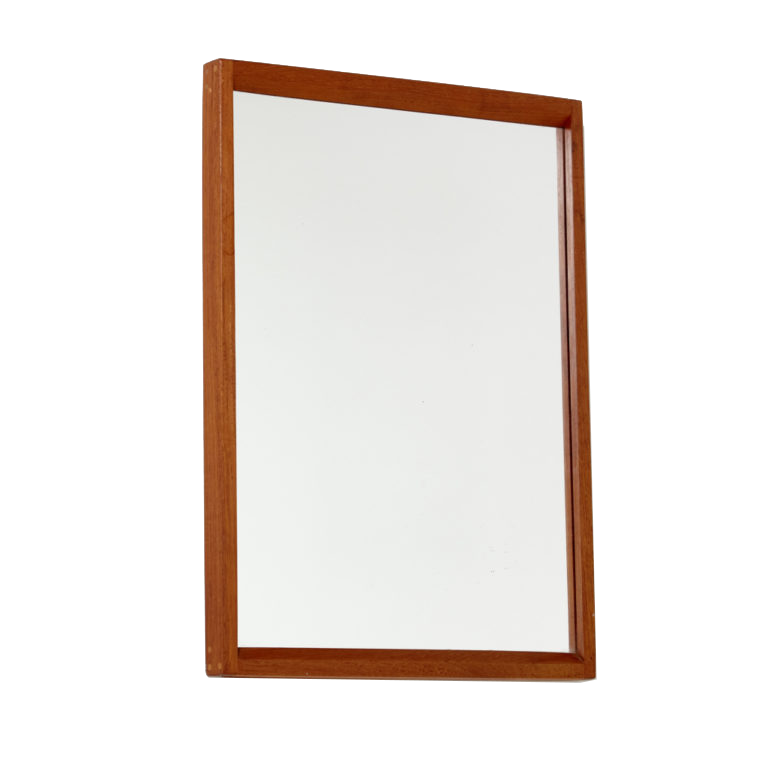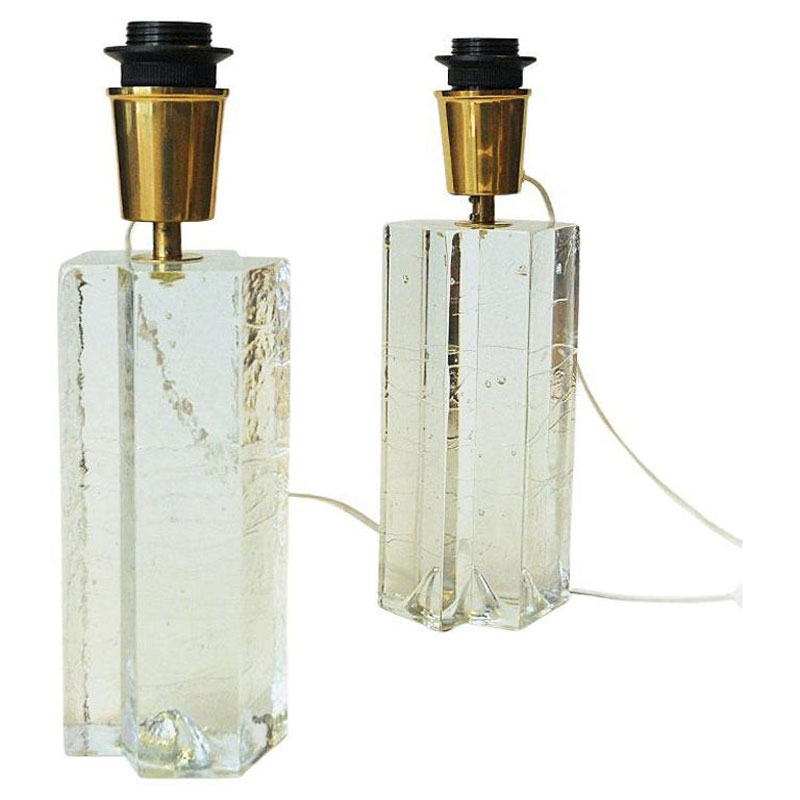Most of the threads deal with Eames, Le Corbusier/Perriand, Saarinen etc, it seems to me that most design addicts are only interested by design icons... what about "new" designers like Christophe Pillet, Jasper Morrison. Are they less interesting because they are not dead and less valuable? 😉
There is of course..
some value in being dead.
To paraphrase Einstein, one could say that after dead everything you have done for yourself is gone and only those things you have done for others remain...which leads to an intersting selection...
This being said, it has taken Le Corbusier or Saarinen a lifetime to achieve the things they did. Le Corbusier at the age of Christophe Pillet was an un-known Suisse architectural-interested individual. At 50 he still had written proliferically but still had to build his major works. I still have to read anything more than some short interview lines of Jaspar Morrison...
I agree that much more should be done in the design world for young designers, more interest, more discussion, more information etc. unfortunately the media are screaming so loudly that it makes every discussion impossible. There are thousands and thousands of talented designers but history is not written by magazines. History is a slow accumulation of achievements and contributions. I happen to think that Christophe Pillet is an irrelevant designer. I could be wrong, but I have no reason to believe that he raises interesting questions, solves interesting or even urgent problems, or allows us to share in his design adventure by telling the world why and how he does it. The Eames', Le Corbusier etc. were champions in this. So, in spite of sharing your regrets about the lack of interest for young designers, I have to admit that most of them want to have achieved at 25 what the "dead" designers achieved at 75....so let time do its work. As a friend of mine who has to limit his communications to the essentials because of Parkinsons decease, wrote me:
Pour l'homme le temps passe
Mais pour le temps, l'homme passe
(For humans the time passes,
but for time, humans pass.)
Bravo!
The post above goes in "The Best of Koen!" Wit. Insight. Mortality. Ethic. Humanity. Suffering no foolishness and yet nurturing and nourishing to any who actually want to take craft seriously. I am grateful. I leanred something from reading this. The day was late. I wondered if I would go an entire day without getting some light. Late in the evening I got some.
icon 2 con
Design's are icons because of the large following, creating an icon status...as well as design solutions brought by clevely thought out ideas of there time.maybe the latter first!
I believe the icon designs show great ability in every shape & form, which is lost in this modern movement. so where they just genius's?? did they get in there first?? are our modern visionaires just plain purchase tags?? What i probe for, is have we seen the best of design??
It be good to see what you all think.
😉
.
I'll get grief from practicing designers and optimists in general, perhaps, but I suspect that a lot of design "capital" was "spent" in the last 100 years, and that thinner times lie ahead. That is, so many basics of form-making were discovered (or rediscovered) and exloited, that it is hard for me to believe that there can endlessly continue to be "something new under the sun," design-wise.
Of course, the only constant is change (to quote another historical cliche) and the explosion of the last century may have been the culmination of the exploitation of common and natural materials, and "old-school" geometries and methods, as prelude to the new wave of materials, processes, and design techniques that we see unfolding as we speak.
I guess...
that "There is some value in being dead" will stay with me for some time...I have to answer Martin before adding some new considerations.
Yes, I am most interested in what young designers do or have to say, as a matter of fact, one of the reasons why I decided to step aside, and put my energy in production rather than in design (although I still design the products we produce) is to "make space" for the upcoming generation. I have never refused any invitation to speak for students and have done so many times. Many have visited for a short or longer period. The only reason why my list of young designers is unlike the one magazines create is that I prefer to look around me, observe, and discover young people with great talent (much more than I ever could rely on) and hope that with some encouragement and help, when needed, they will get the opportunities they deserve. I do not think that it is the task of the media to make that selection. It's a professional issue and it should be done by the professions involved. The late Jane Jacobs, by the way, mentioned this lack of control of the quality of the professions by professionals as one of the indications that we might have a new "Dark age ahead". The strenght of the generation of Alvar Aalto, Le Corbusier, the Eames',Bertoia, Ponti, Colombo, Wirkalla, Kjaerholm, Wegner etc..up to Rams, Castiglioni Sapper, Mellor and Mari is that they came to the top, not as a result of media efforts, but as a result of the admiration of their peers and their involvment in the ongoing discussions within the profession. In the list that Don proposes, I think there are some interesting names. What Brian Keaney is doing with Tony Alfstrom in "Tonfisk" is not only interesting from a "product" design point of view, but it is also a promessing direction in the place of the designer in the industry. Marco Acerbis does more or less the same thing with Acerbis. Editing or producing as a integral part of design is certainly an alternative in that kind of technologies that do not require huge capital investments. I know what Luca Casinis and Jacob Springiers are doing but I am not impressed...maybe the "Sonic" cutlery for WMF and some of there beauty products packaging... the only one that in my view is a very distictive voice is Konstantin Grcic and the people in his Office in Munich. The difference to me is that the "great" ones are always the ones that are an inspiration to others. I see that in Konstantin Grcic's work...reluctantly in Philippe Star's...and even in Karim Rachid's. Whereas the generation of Marco Acerbis, Alain Berteau, Patricia Urquila etc. does not seem to have found their own voice yet. I agree that they have to work in a difficult context. There is little room left for reflection, discussion...reading and writing. The media are interested in images and captions, not in "why" or "how" but in "new" To create direction, to work on a consensus within these limited means is difficult...but interesting
I really like Keaney's...
I really like Keaney's coffee set from Tonfisk.
I don't know if it's because I'm from Denmark and I've grown up with Poul Kjærholm, Finn Juhl and Hans J. Wegner but I found most new furniture really boring, also by new Danish designers (yes, we have a few). There's no sense of detail or interesting blends between different materials. No aesthetic curiosity. They almost lack clear signs of intelligens and creative warmth. I can't help but think that it's such a waste of Mother Nature's materials ... and money for those who buy it (esp. if it's furniture by Karim Rashid). I think Patricia Urquila and Christophe Pillet are good examples of this (though they're clearly talented and I like some of their stuff). I don't know ... perhaps I expect too much.
Scandinavian design ... well, it's not humoristic and quirky like Dutch Design, it's not sexy and seductive like Italian and Spanish design, it's not formal and confident like British design or ambitious and fast like American design but it's sensible (... yes yes and a bit boring). Though always good quality, usable, durable and strongly constructed. I like that. If we just had a bit more of everything described above, we could rule the world again. Quality never goes out of style and who said that God is in the details? I think he's right.
Wait a minute ... what ever happend to German design?
Allow me...
to add some other considerations...I am looking at the Barcelona chair in the advertizing strip next to de designaddict logo and it reminds me of the fact that most heavy weights of the modern mouvement were educated during the previous period. The chair is not only an interpretation of the "X" shaped trones of the middle ages (the chairs were designed as seats for the Spanish Queen and King visiting the German pavilion in the Barcelona world fair) it is also extremely well proportioned and designed in such a way that it could be well made and age in good condition. Much of this is the result of an education that is not available anymore. To innovate, to re-think the basics of your profession, and to re-shape it with the certainty given by an education that allows you to fall back any time on solid ground is a very different position from the generation that was not given a similar background but is simply asked to "innovate" more or less at all cost. As you point out Martin, there are quite a lot of "good intentions" but as Mies Van der Rohe said: "God is in the details" and so I think that a lot of these "new" ideas would look a lot more interesting and "timeless" if they were better proportioned, better "developed" (going over and beyond the initial idea) I hate to put someone on the spot but Don Wilson mentioned his name and the picture is easely accessible in the index...so a good exemple is the "instant" chair of Alain Berteau. The start is a simple idea of cutting a seat out of a larger piece of plywood or MDF in such a way that the left-over serves as one leg. Do the same thing with the backrest and you have the other leg. Affordable and good thinking...but what makes the chair less interesting is the way it is done. The proportions are "off" and one gets the impression that this is the first prototype. I am sure that 20 prototypes later the chair would have found it's "natural" shape. It makes me wonder to what extend we have done a good job in passing on the skills and the knowledge accumulated over generations to the next one. Paul Kjaerholm could agonize over the place of the head of a screw for days...no wonder he finally choose the right one.
I think Berteau's "Fence"...
I think Berteau's "Fence" chair is possibly one of the ugliest chairs I've ever seen ... closely followed by his "Instant" chair (though the idea is interesting).
If all the old masters of design where taught a way that allowed them to later create this quite high number of design icons within a few decades, then where did it go wrong reg. passing on the skills and knowledge to the next generations? I would love to have a discussion about this because I think it's nessercary. It really puzzles me frequently so please help me understand so I can worry a little less and only get frustrated some of the time. I know, perhaps it's a bit weird using your energy on this subject when you're 24 like me but I can't help but wonder if we don't have time for details anymore? I always get reminded of this when I spot an old car from the 1920's-1960's. Wow, such personality, such a charisma - or should one say "stage presence". My eyes never get tired from looking at the large amount of details, their interiors feel great and are often beatifully executed. However when looking at new cars, I tend to yawn almost every time. It seems there's a whole different set of qualities we appreciate these days so what happend to the old ones. Why are we in such a hurry? It seems everything is getting more and more streamlined and clean-cut and thus more simple - soon there's nothing left when we've decided to return to just sitting and sleeping on the floor.
Blah blah blah, it's 2 AM and I can't sleep. Could someone please just cut straight to the inner core here?
Considering I'm a layman talking with exceptional professionals here...PT.1
I would have considered it a major feather in my cap to have Koen or anyone else that has commented find merit in even one of the young designers that I submitted as seeming promising. So: I can hardly feel taken to the wood-shed, when Koen points out rightly that Alain Berteau's Instant Chair is a good concept that was half baked. And I agree with Martin that Berteau's Fence Chair, while not one of the ugliest chairs I have ever seen (frequenting thrift stores I see some REAL grotesqueries) is, nevertheless, a dumb conceit that Berteau will one day (if he survives and develops greatly)look back on and scoff at, the way, say, author Herman Melville, after growing into the writing of Moby Dick, disowned and scoffed at his popular first book, Typee, as the work of an naive amateur spinning a crude yarn. But I do not see how a person cannot look at Berteau's other pieces and not see promise. Does Berteau's work evidence the deep unfolding of rigorous, flaming genius? No. I think he will need to wake up one day and decide he has to become more than a high concept improviser to achieve the kind of mastery of craft that will allow him to grow professionally for the rest of his lifeand keep looking at himself in the mirror and liking what he sees. Is it probable that he will? No. Is it possible? Yes. He has talent. And talent is always the ante to any game; with commitment to mastery of technique the cache of chips that must be waged to even have a chance to grow into a skillful player in phase two of how to become a master. Put another way, Alain Berteau has proven to me that he can harmonize/reconcile the present with the recent past, as so many post modernists and neomodernists have thought an end in itself. The question is can he now take the next step of growth and begin to harmonize more of design than just the present and the immediate past? Can he begin to harmonize the present and immediate past with the deep, ancient, archetypal, mythic roots of design?
Considering I'm a layman talking with exceptional professionals here...PT.2
I see at least a possibility that he could, if he has the abiding questions that drive persons to look deeply into their work and grow beyond the copy-and-modify stage into the work it through from deep principles to finished product stage of mastercraftspersons. And possibility of such growth into an old master is all I was trying to hint at in my casual, noninclusive list--not certainty. In looking at young designers, or young baseball players, and trying to find promise, we are talking about seeing some flashes of brilliance and some sign of the kind of deep drive and character that is required to continue to ruggedly pursue the discipline through the various psychological phases of one's life via the near endless realms of competance the discipline requires. Berteau probably is the least promising among the ones I mentioned (I think so), because he does not evidence much depth of design thinking and problem solving. But I do not see how one can look at his Play chair, or his Ruby chair, and not see that this is someone with a flair for conceptualization. His aptitude runs to high concept, as they say in the movie trade, not in working out the finished script. But it is important to remember that while high concept is not enough to be more than a good beginner, it is certainly required ante to get in the poker game of design greatness. Deeply rigorous design discovers a powerful concept or coceit and iterates around it until it finds a brilliantly elegant and fitting formal expression in the materials regarding the design solution targeted. No, Berteau's work does not evidence one whit of ability to work through a design from scratch--from beginning to end. But it does evidence a young mind brilliantly reconceptualizing (in some cases) forms evolved the hard way by preceding masters. If I were a teacher or master to an apprentice, I would personally prefer to teach a person who has a penchant for high concept and challenge them to drive that conceptual capacity deep into the guts and tradition of their profession, rather than teach a deep thinker and feeler to conceptualize. But it can probably be done either way, I suppose.
All this being said, I agree with Koen that Konstantin Grcic seems the most influential on my partial list. Further, I would add that Brian Keaney seems the most likely to grow to be able to bring to the next generation's table the kind of rigor, intelligence, skill, and taste in design solution required to truly improve artifacts in the way that I respect Koen so much for having been able to do for so long at such an exceptionally high level.
If you need any help, please contact us at – info@designaddict.com









